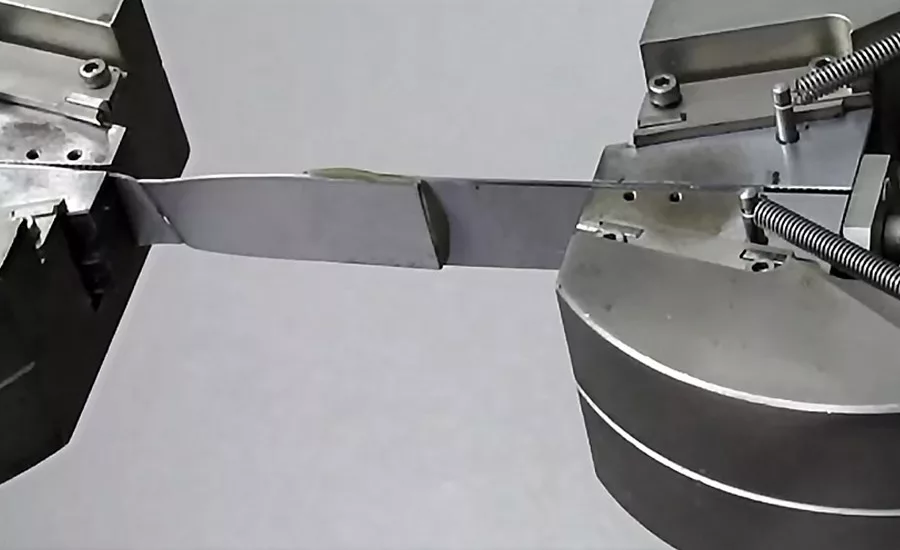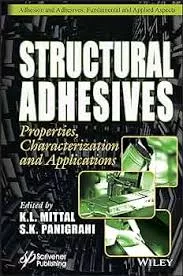What Are Structural Adhesives?
Structural adhesives can offer stronger bonds than mechanical fasteners.

Adhesive bonds can be stronger than steel.

Structural adhesives are an effective method of fastening many of the next-generation materials used in transportation-related industries.

When selecting the ideal structural adhesive for a specific end-use application, significant testing should be performed and evaluated.
A structural adhesive is a “load-bearing” adhesive that is used to bond a joint and is capable of holding two or more substrates together under stress. These joints are the most important bonds in a product because failure can be catastrophic to the product’s structure and function. When a product is exposed to vibration, shock, chemicals, temperature deviations, or other types of weakening or destructive agents within specified tolerance levels, a properly applied structural adhesive should remain securely bonded.
Structural Adhesive Advantages
Structural adhesives can offer stronger bonds than mechanical fasteners. Adhesives provide many advantages over traditional fastening methods, including improved stress distribution. If two substrates are connected by a fastener, and a shearing force is applied, all the force is around the fastener. However, if an adhesive is used to bond the joints, the force is distributed across the bond line, resulting in a stronger assembly.
While shear strength is critical in many applications, filling large gaps is also another benefit that improves structural integrity and dampens vibration and movement. Adhesive application using robots or automatic dispensing systems further increases the efficiency, accuracy, and consistency that adhesives offer. In addition, adhesives offer lower material costs per application than mechanical fasteners, as well as lower labor compared to welding and threaded fasteners, which involve multiple attachment points.
Types of Structural Adhesives and Substrates
Structural adhesives are thermoset polymers that are available in three main chemistries: epoxies, urethanes and acrylics. Beyond the bond itself, these adhesives are responsible for filling gaps to prevent contamination and block the entrance of liquid. Epoxy and acrylic adhesives resist up to 400°F, while most urethanes withstand temperatures up to 250°F. As a result, epoxies and acrylic adhesives are more temperature resistant than urethanes.
Epoxy adhesives represent a versatile family of structural adhesives. They provide the highest shear strength on a variety of metals, composites, thermoplastics, glass, and natural substrates such as wood. They also have very good chemical resistance. Epoxy adhesives are often an excellent choice for filling large gaps and can even be used for potting and encapsulation. For epoxy applications, the substrate surfaces should be cleaned thoroughly.
While most epoxies are rigid when cured, urethanes are flexible. Urethanes are known for high shear and peel strength, and they exhibit very good adhesion properties for sheet molding composites (SMCs). As such, they are often used in marine and automotive industries. Urethanes provide good adhesion to wood, plastic, and primed or painted metals. Polyurethanes may require the use of primers to achieve high bond strengths. Bonding to metals without a primer is not a good idea and does not give a perfect result.
For unprepared metal and composite bonding, acrylic adhesives are the best choice. They can successfully bond to metals and composites with little to no surface preparation. Because a primer is not required on the surface, acrylics provide cost and efficiency advantages. Generally, acrylics have high impact strength with good shear, peel strength, and fatigue resistance. Acrylics can also cure quickly at room temperature.
The types of substrates that structural adhesives can bond include metals, plastics, glass, rubbers, ceramics, and composites. As a rule of thumb, epoxies are a match for adhesion to metals. Epoxies create a high shear and peel strength when they bond to metals, and they provide excellent resistance to temperature and chemicals. Adhesion to plastics (even those with low surface energy) is best provided by acrylics. Methyl methacrylates provide especially high strength on plastics. UV-curable structural adhesives are best for bonding to glass, especially due to the aesthetic appearance since they create invisible bonds. For composites, polyurethanes provide a faster set time, offering the best bonding.
Any required surface preparation to bond joints correctly depends on both the substrate and the adhesive used. No matter what you are bonding or what adhesive you are adhering with, the surface should be clean of oils, dust, and loose particles. In many cases, if you are having trouble securing a bond, gently abrading the bonding surface can help create more surface area and texture to bond substrates.
End-Use Applications
Many industries use structural adhesives, including aerospace, automotive, and marine manufacturing, just to name a few. These industries have learned to use adhesives due to cost, time, weight, performance, environmental concerns, and aesthetic improvements.
Transportation manufacturing industries are leading the adoption of the latest adhesive technologies for two main reasons. First, adhesives provide remarkable bonding strength with low weight, making them a primary tool when lightweighting designs. Weight is critically important, especially in transportation industries. Even a slight reduction in the weight of an airliner results in massive operational cost reductions over the life of the plane. Significant fuel savings can be seen by lowering the weight of cars or boats as well. Any reduction in weight may make a product more portable, reduce shipping costs, or allow for the installation of additional components to give a product new abilities and a competitive advantage.
Second, adhesives are an effective way to fasten many of the next-generation materials used in these industries, including the composites and ceramics that are sometimes sensitive to the focused stress points that welds and threaded fasteners create. Rather than creating stress points, adhesives disperse the stress of a joint across the entire bonded surface. This reduces the risk of distortion, which effects the performance of the assembly.
Most manufacturers can recognize when to choose adhesives over welding or mechanical fasteners by looking at their manufacturing process and product environment. For example, thermal joining methods such as welding may cause heat distortion in some substrates, which affects the performance of the assembly. Adhesives do not cause any such distortion. If substrates are particularly thin or if there is a risk of warping the material with heat, then adhesives are indicated. Adhesives are also indicated if products will be exposed to water and/or chemicals that may damage or penetrate other fastening methods.
Additional situations that lend themselves to the incorporation of adhesives include the bonding of different metals, if metals are exposed to thermal cycling, or if galvanic corrosion (an electrochemical reaction that occurs between some metals) is a risk. Adhesives provide an inert barrier between corrosive metals while naturally providing a watertight barrier.
Selecting the Right Adhesive
In choosing the ideal adhesive for a specific application, consultation with an expert is important. The key factor is testing the adhesive for the targeted substrate; a final decision should not be made before significant testing is performed and evaluated. Conditions such as temperature and humidity, cleanliness of the application area, and the mechanical requirements of the bonded parts should be carefully observed.
If the bonded parts will be subjected to high impact or vibrational forces, impact tests should also be performed before choosing the adhesive. An impact test is employed to measure the structural adhesive’s resistance to cleavage fracture. Most structural adhesives are limited to a range of 15-20 joules impact strength, but some adhesives offer higher impact resistance. For example, the next generation of structural adhesives offers impact resistance greater than 40 joules; the shear strength for this same adhesive is greater than 3,500 psi for steel-to-steel bonds.* (It is important to note that all discussions of the “strength” of an adhesive are specific to the substrates tested. Bonding capabilities may vary widely from one substrate material to another.)
Similarly, the lap shear strength of bonded assemblies is measured by pulling bonded substrates from the adhesive in opposite directions. This simulates shearing action, where two forces are moving past each other in opposite directions. Proper surface preparation is needed before performing the test. Laboratory conditions that control temperature and humidity should simulate the actual end-use environment.
Many other variables, such as viscosity, adhesive (gap) thickness, and curing cycle, should also be carefully specified before selecting an adhesive. Finally, it is critical to identify the magnitude and type of the stresses that the joint will encounter before the ideal adhesive can be selected.
For more information, visit www.hernon.com.
Looking for a reprint of this article?
From high-res PDFs to custom plaques, order your copy today!




